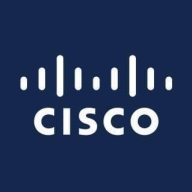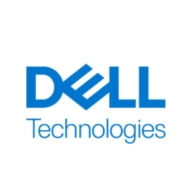

Cisco UCS B-Series and Dell PowerEdge MX-Series compete in the server market, known for their robust capabilities and management solutions. Cisco has the upper hand in centralized management and seamless blade deployment, while Dell triumphs with hardware flexibility and processor upgrades.
Features: Cisco UCS B-Series is renowned for its scalability and integrated virtualization support. It benefits from robust centralized management through UCS Manager, enabling seamless blade deployment with minimal cabling. Dell PowerEdge MX-Series features rapid processor upgrades and efficient high-density configurations, alongside streamlined network integration, catering to varied IT infrastructure needs.
Room for Improvement: Cisco UCS B-Series could enhance its management interface and simplify integration to increase accessibility for non-experts. Customers often find Cisco's components expensive and its setup process challenging. Dell PowerEdge MX-Series should focus on expanding network and chassis options and simplifying iDRAC console processes, with competitive pricing as a key area for improvement.
Ease of Deployment and Customer Service: Cisco UCS B-Series offers flexible cloud configurations, supporting various hybrid implementations, and receives praise for efficient technical support. However, some users report delays in Cisco's support response. Dell PowerEdge MX-Series primarily focuses on on-premises deployments, with technical support lacking regional availability, occasionally requiring reliance on local partners.
Pricing and ROI: Cisco UCS B-Series and Dell PowerEdge MX-Series share a premium pricing strategy. Cisco's costs encompass extensive licensing and hardware investments, promising long-term savings through reduced maintenance. Dell aligns with industry standards, offering negotiable discounts for flexible pricing. Cisco delivers ROI through operational efficiency, while Dell emphasizes scalability and negotiable pricing as key advantages for cost management.
Additionally, we achieved server consolidation, running multiple services on fewer servers without purchasing new ones, resulting in significant financial benefits.
Regarding the cost-effectiveness and measurable benefits of Dell PowerEdge MX-Series, I find it worth the money because they are modular and consolidate most things, making it good for future planning.
We utilize AI technology with Dell PowerEdge M through a module known as CloudIQ, which provides automation and takes care of predictive analysis and reporting.
Cisco's technical support is highly helpful and responsive.
When we had errors upgrading operating systems and did not upgrade the firmware with the right compatibility matrix, they supported us and helped us with various aspects.
They provide excellent help when needed.
Regarding technical support from Dell, I find them to be one of the best support providers in the industry right now.
Regarding scalability, I can scale up to 64 enclosures, and each enclosure can hold around 7 blades.
The stability of Cisco UCS B-Series is impeccable, as it has been running smoothly without any need for maintenance.
I have not experienced any crashes, downtimes, or performance issues as it is an enterprise product.
Last year, we faced challenges with firmware upgrades, but they were quickly resolved with assistance from Cisco TAC.
For example, one chassis with eight blade servers takes approximately four hours to update all the firmware inside.
I would like to see more functionality with SmartFabric in Dell PowerEdge MX- Series.
In terms of potential room for improvement regarding Dell PowerEdge M, I would want to see something such as dense nodes and additional storage, as well as multiple network connectivity on the blades.
The management software, Cisco One, is priced a bit high but still considered reasonable.
Sometimes Dell may be a little costlier, but that is considering the services and solutions we are providing, which can be adjustable.
Its administration capabilities provide easy access to performance reports, logs, and utilization data, which are essential for effective server management.
From the networking perspective, the advanced networking capabilities have excellent features called SmartFabric; for upgrades, it is just plug and play, and SmartFabric takes care of everything.
The ease of troubleshooting and managing through remote access, using tools like iDRAC, significantly saves me time.
If the customer is changing their network infrastructure from 1GB or 10GB to 25GB or 400GB, the MX7000 fabric switch can support that.
| Product | Market Share (%) |
|---|---|
| Dell PowerEdge MX- Series | 13.0% |
| Cisco UCS B-Series | 6.9% |
| Other | 80.1% |
| Company Size | Count |
|---|---|
| Small Business | 20 |
| Midsize Enterprise | 15 |
| Large Enterprise | 41 |
| Company Size | Count |
|---|---|
| Small Business | 12 |
| Midsize Enterprise | 4 |
| Large Enterprise | 11 |
Dell PowerEdge MX-Series servers excel in high-density, high-performance computing, ideal for modular environments requiring efficient rack-scale solutions. They optimize space, power, and cooling while offering scalable architecture for diverse, demanding workloads.
PowerEdge MX-Series offers unmatched efficiency in high-performance computing infrastructures, leveraging a disaggregated architecture in the IR7000 rack. This approach separates power and cooling from nodes, enhancing flexibility and serviceability for AI, HPC, and large-scale virtualization. Featuring the latest processors and advanced interconnects, it supports robust scalability and superior performance, driving businesses to modernize their infrastructure confidently.
What are the standout features?Dell PowerEdge MX-Series is extensively employed for virtualization, data center consolidation, and hyper-converged infrastructures. Widely adopted for storing virtualization on blade servers and handling compute tasks, it is a trusted foundation for diverse workloads like private clouds and scientific computing. Notably effective for data logging in solar power plants and delivering scalable infrastructure where compute and processing speed are critical, without dependence on traditional virtualization platforms.
We monitor all Blade Servers reviews to prevent fraudulent reviews and keep review quality high. We do not post reviews by company employees or direct competitors. We validate each review for authenticity via cross-reference with LinkedIn, and personal follow-up with the reviewer when necessary.